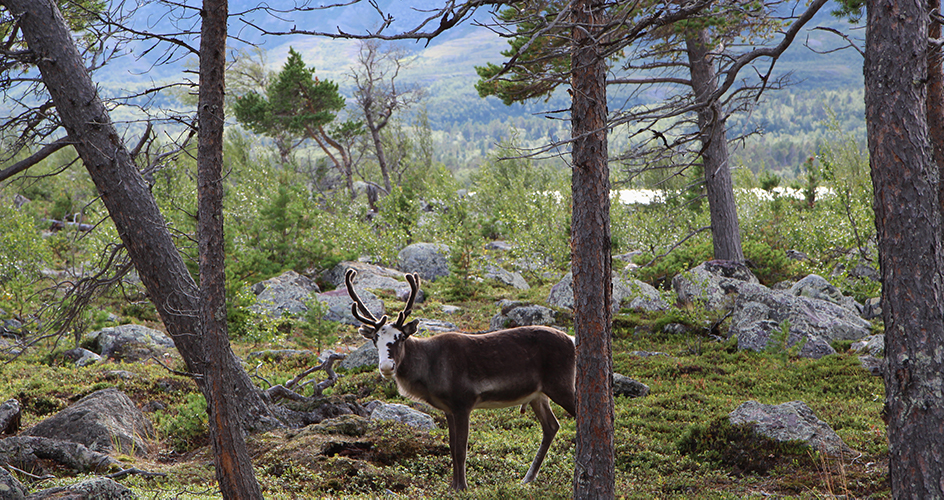 Foto: Laponiatjuottjudus
Foto: LaponiatjuottjudusWildlife
Stora Sjöfallet/Stuor Muorkke gets less snow than other nearby areas. Below Áhkka the bare patches often are clearly visible.
They attract reindeer that find good fodder and get along well in the area. There is also a good chance of seeing elk. If you are lucky, you might see lynx as well. They like the stony and rocky terrain. Wolverines and bears also are found here.
Hydroelectric power has had an impact
Wildlife has been affected by hydroelectric power construction. Good grazing land lies underwater. There is not an especially large population of waterfowl left. Higher up, around Nieras, Gallaktjåhkå and the other peaks, you can hear snow bunting, Lapland bunting, wheatear, golden plover and grouse. Birds that nest in the national park include peregrine falcons and golden eagles.
Did you know that
In some years there is an outbreak of autumnal moths. A sign of this is birch leaves that have been eaten up. That accelerates the ecological cycle. In a birch forest that has been invaded by autumnal moth larvae, life on the ground explodes. Grass and plants benefit, as does bird life, when there is a profusion of larvae for the bird broods. Along with the reindeer and rodents, they serve as a kind of conservationist. In places where the reindeer graze and trample, the crowberries and willows are pressed down and it is easier for other plants to grow. This, in turn, benefits more species of insects. Rodents serve a similar purpose because they feed on crowberries under the snow cover.
Share with your friends
Share this page with your friends on Facebook, X (formerly Twitter), Google+ and e-mail.





